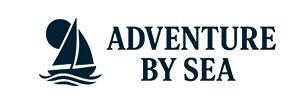Into the Blue: Kona’s Deluxe Snorkel at Captain Cook and the Place of Refuge
Swim over volcanic reefs, chase the light in sea caves, and drift through one of Hawaii’s richest marine sanctuaries.
The boat noses south along the Kona coast as the morning sun clears Hualālai. Lava cliffs stand like black ramparts, scalloped by time and surf. The Pacific is calm, unrushed, inviting. You can feel the water watching you back—steady and blue, as if daring you to jump in and see what it’s been keeping secret overnight.
Trail Wisdom
Go Early for Glassy Seas
Morning departures on the Kona coast typically offer the calmest water and best visibility for snorkeling.
Choose Reef-Safe Sunscreen
Use mineral-based sunscreen (zinc or titanium) and apply 20 minutes before boarding to protect coral and avoid slick hands on gear.
Pack Motion-Sickness Backup
Even calm days can bring light chop—consider meclizine or ginger if you’re prone to seasickness.
Fin Etiquette Saves Reefs
Keep your body horizontal and kick gently to avoid contacting coral; never stand on the reef.
Local Knowledge
Hidden Gems
- •Peek into the sea cave mouth south of Kealakekua on calm days—the filtered light is surreal.
- •Drift the sandy patches near Puʻuhonua o Hōnaunau’s ‘Two Step’ for eagle-eyed chances at shy eels and juvenile reef fish.
Wildlife
Hawaiian spinner dolphins, Green sea turtles
Conservation Note
Kealakekua Bay is a Marine Life Conservation District—use reef-safe sunscreen, keep fins off coral, and maintain legal distances from marine mammals.
Kealakekua Bay marks the site of Captain James Cook’s death in 1779, and Puʻuhonua o Hōnaunau served for centuries as a place of refuge under Hawaiian law.
Seasonal Guide
spring
Best for: Reliable visibility, Lighter crowds
Challenges: Occasional showers, Variable trade winds
Shoulder season brings steady snorkeling conditions with mild temps and fewer boats on the water.
summer
Best for: Calmest seas, Warmest water
Challenges: Strong sun exposure, Higher demand
Expect glassy mornings, outstanding visibility, and higher UV—plan for sun protection and hydration.
fall
Best for: Peak clarity, Warm water with fewer visitors
Challenges: Pop-up squalls, Late hurricane-season remnants
Early fall often delivers the sweetest combo of calm seas and space to spread out at the reef.
winter
Best for: Humpback whale sightings, Cooler air temps
Challenges: Occasional northwest swell, Slightly rougher seas
You may see whales offshore; Kona is usually leeward-calm, but swells can bump up surface chop.
Photographer's Notes
What to Bring
Long-sleeve UPF Rash GuardEssential
Sun protection that won’t wash off keeps you safer and reduces sunscreen in the water.
Reef-Safe Mineral Sunscreen (SPF 30+)Essential
Protects skin under intense Kona sun without harming coral ecosystems.
Anti-Fog Mask Drops
Clear lenses mean you spend more time enjoying the reef and less time fussing with your mask.
Compact Dry Bag
Keeps phone, wallet, and a light layer dry during boat transfers and spray.
Common Questions
Do I need to bring my own snorkel gear?
High-quality masks, snorkels, and fins are typically provided, but you’re welcome to bring your own if you prefer.
How strong is the current at Kealakekua Bay?
Currents are usually mild in the protected bay; guides choose entry points and brief you on drift direction before you hop in.
Will we see dolphins or whales?
Spinner dolphins are common year-round, and humpbacks are seen offshore in winter, but wildlife sightings are never guaranteed and approach distances are enforced.
Is this tour suitable for beginners?
Yes—if you’re a comfortable swimmer. The crew offers instruction and flotation aids, and the boat remains nearby.
What should I wear on the boat?
Wear a swimsuit under a UPF layer, bring a hat and sunglasses, and pack a light cover-up for the ride back.
Where does the boat depart from?
Most tours depart from Honokōhau Harbor near Kailua-Kona; your confirmation includes exact check-in location and time.
What to Pack
Mineral sunscreen for reef safety; a long-sleeve rash guard to beat the Kona sun; motion-sickness tablets if you’re sensitive to swell; a dry bag for phone, cash, and a light cover-up.
Did You Know
Kealakekua Bay is one of Hawaii’s first Marine Life Conservation Districts (established in 1969), protecting an exceptionally biodiverse reef system.
Quick Travel Tips
Check in 30 minutes early at Honokōhau Harbor for parking and gear fitting; hydrate before and after your snorkel; bring cash or card for post-trip poke in Kailua-Kona; whales peak December–March if you’re hoping for sightings offshore.
Local Flavor
Refuel at Kona Brewing Company’s Koko Marina-style pub in Kailua-Kona for island ales and fresh pizzas, or hit Da Poke Shack for premium poke bowls. Coffee lovers should detour up to Holualoa’s small farms for 100% Kona tastings. South of town, Manago Hotel in Captain Cook serves a classic pan-fried pork chop with old-Hawaiʻi charm.
Logistics Snapshot
Closest airport: Kona International (KOA). Departure: typically Honokōhau Harbor, ~10–15 minutes north of Kailua-Kona. Cell service: reliable in town, spotty offshore. Permits: none needed for guests; tour operator handles marine area compliance. Bring ID and confirmation; arrive early for check-in.
Sustainability Note
Hawaii enforces a 50-yard approach limit for spinner dolphins and 100 yards for humpback whales—respect these distances, use reef-safe sunscreen, and never touch coral or turtles to keep Kona’s reefs healthy.
Continue Reading

Into the Blue: Diving Dahab’s Iconic Blue Hole
A deep vertical sinkhole on the Sinai coast, the Blue Hole draws divers, freedivers, and curious travelers with its dramatic drop and vibrant reef rim. Here’s a practical guide to experiencing it safely and respectfully.
Dahab, South Sinai

Lanai Island: Small-Island Solitude Between Maui and the Horizon
Lanai is an island of contrasts: protected reefs for effortless snorkeling, raw northshore coasts accessible only by 4x4, and high ridgelines that deliver sweeping views—all with few tourists and a quiet, deliberate pace.
Lanai City, Hawaii

